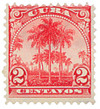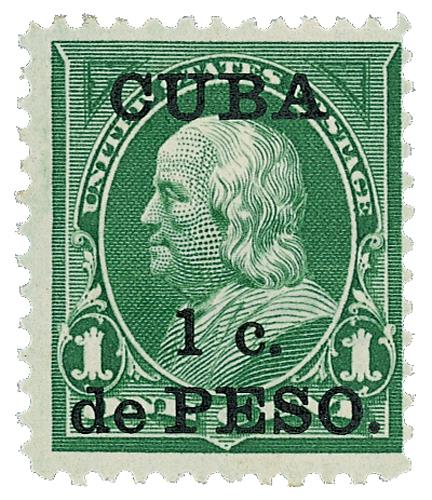
# CU228 - 1899 2c Cuba - Royal Palms, carmine
Cuba #CU228
2¢ Royal Palms Stamp
Not long after the U.S. issued overprinted stamps for use in Cuba, new stamps were designed and printed by the U.S. Bureau of Engraving and Printing. The second of these stamps pictures a group of Royal Palms, the national tree of Cuba.
Few of these scarce Cuba stamps still exist. Over time these stamps may become even more difficult to find, so order now.
Few U.S. Cuba Overprint Stamps Survive!
When the U.S. Battleship Maine mysteriously exploded after being sent to Cuba to protect Americans caught in Cuba’s war for independence, Spain was blamed. Soon after, war was declared and America took administrative control of Cuba as well as Guam, Puerto Rico and the Philippines. The United States established a military government to run Cuba from 1898 until 1902, when the nation’s first president was elected.
Although many native Cubans were angered by U.S. policies, social conditions improved a great deal during the American occupation. Most important was the effort led by Dr. Walter Reed to combat the deadly “yellow fever.”
As an emergency measure in 1899, U.S. stamps were overprinted for use in Cuba. The overprinted stamps included the 1894 Bureau issues and the Series of 1898-99, stamps that were commonly available at that time. Shortly after, the emerging republic issued engraved pictorial stamps with distinctly Cuban themes that included Christopher Columbus, royal palms, and ocean liners.
Two years later, Cuba drafted its own constitution and U.S. military administration in Cuba ended in 1902 with the formation of the Republic of Cuba. In less than four years, Spain’s colonization of the Caribbean and Philippines had ended, and the United States emerged as a world leader.
U.S. Places Embargo On Cuban Goods
The U.S. and Cuba have had a long and tumultuous shared history. The Spanish first settled Cuba in 1511. Colonists grew sugar cane and tobacco on large plantations, relying on the forced labor of native peoples.
Cuba’s Spanish settlers became increasingly dissatisfied with Spain’s rule and many revolutionary groups were formed. By the mid-1800s, many Cubans and Americans favored making Cuba part of the United States. The U.S. government made several attempts to buy Cuba from Spain, but Spain refused them.
The Cubans eventually took up arms against the Spanish due to a lack of political power and rising taxes. By the late 1800s, many Americans wanted to intervene in the conflict. Following the explosion of the American battleship Maine in Havana Harbor, the U.S. officially declared war on Spain. By August 1898, the Spanish surrendered. The U.S. emerged as a world power and gained the territories of Guam, Puerto Rico, and the Philippine Islands.
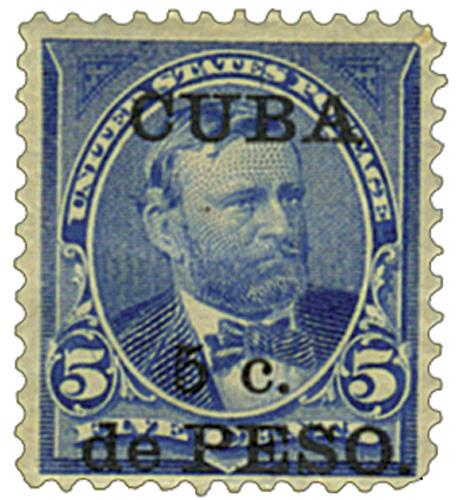
After the Spanish-American War, the U.S. established a military government in Cuba. Cuba adopted a constitution in 1901. The constitution contained provisions called the Platt Amendment, which allowed the U.S. to intervene in Cuban affairs. It also allowed the U.S. to buy or lease land for naval bases in Cuba. In 1903, the U.S. received a permanent lease to build a naval base on Guantánamo Bay.
Over the next 50 years, Cuba was in a state of unrest, with new governments forming and frequent revolts by and against Fulgencio Batista. Among those opposed to Batista’s dictatorship was Fidel Castro. Castro circulated a petition calling for deposing the illegal Batista government. This proved ineffective.
On July 26, 1953, Castro attempted to start a revolution by leading an attack on the Moncada Army Barracks in Santiago de Cuba. This proved disastrous. Castro and many of his followers were imprisoned. Castro was released from prison in 1955. He formed the 26th of July Movement, a revolutionary group named after the date of his first revolt. Castro took his group to Mexico, where they could organize safely.
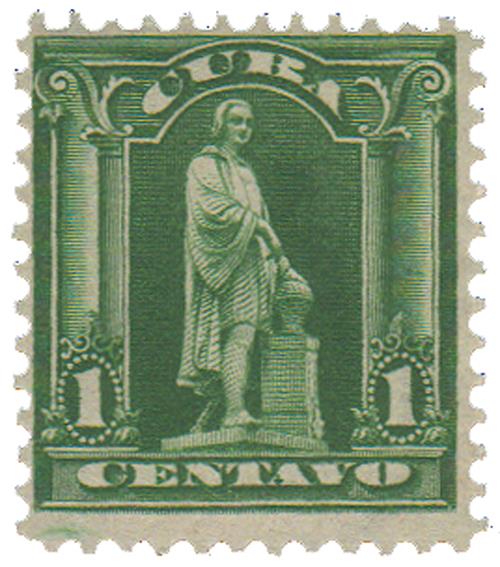
In December 1956, Castro’s forces landed in eastern Cuba. Most of Castro’s rebels were quickly killed – but Castro and 11 others managed to escape into the Sierra Maestra Mountains. From the mountains they waged a guerrilla war against the Batista government.
Batista’s increasingly unpopular dictatorship provided fertile ground for Castro’s 26th of July Movement. The dictator’s attempts to neutralize Castro and his men made the rebels more popular with the people. By mid-1958, public support for Batista was crumbling. On January 1, 1959, Batista fled Cuba.
Castro’s forces quickly took control of the country. The old government was dismantled – many former political officials and military officers were executed. By mid-February, Castro was sworn in as prime minister. The U.S. supported Castro’s government… until American-owned properties in Cuba were seized. Relations declined sharply.
In the spring of 1960, President Dwight D. Eisenhower approved a plan to embargo sugar, oil and guns. Then in June, U.S. oil companies refused to refine oil in Cuba that had been delivered by the Soviet Union. Eisenhower then cut the Cuban sugar quota by 95 percent. None of this deterred Castro, who continued to nationalize American business and commercial properties. As a result, President Eisenhower enacted a trade embargo against Cuba on October 19, 1960.
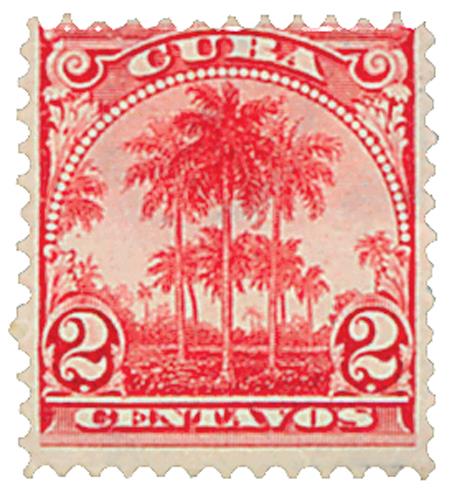
Eisenhower’s embargo outlawed all U.S. exports to Cuba except medicine and some food. President Kennedy later expanded the embargo to include all U.S. imports from Cuba.
On April 16, 1961, Castro declared Cuba a socialist state. A one-party Communist system was established. Castro pursued a close relationship with the Soviet Union and enacted many Soviet-styled, state-controlled agricultural and industrial “reforms.” The Soviet Union contributed a great deal of financial aid to Cuba – the nation’s economy grew very dependent upon this assistance.
As “the revolution” grew more radical, large numbers of Cubans fled their country. Once exiled in America, many of these exiles worked to undermine Castro’s regime. In 1959, a group of anti-Castro exiles even hired U.S. planes and flew over Cuba, dropping leaflets and small firebombs.
Cuba #CU228
2¢ Royal Palms Stamp
Not long after the U.S. issued overprinted stamps for use in Cuba, new stamps were designed and printed by the U.S. Bureau of Engraving and Printing. The second of these stamps pictures a group of Royal Palms, the national tree of Cuba.
Few of these scarce Cuba stamps still exist. Over time these stamps may become even more difficult to find, so order now.
Few U.S. Cuba Overprint Stamps Survive!
When the U.S. Battleship Maine mysteriously exploded after being sent to Cuba to protect Americans caught in Cuba’s war for independence, Spain was blamed. Soon after, war was declared and America took administrative control of Cuba as well as Guam, Puerto Rico and the Philippines. The United States established a military government to run Cuba from 1898 until 1902, when the nation’s first president was elected.
Although many native Cubans were angered by U.S. policies, social conditions improved a great deal during the American occupation. Most important was the effort led by Dr. Walter Reed to combat the deadly “yellow fever.”
As an emergency measure in 1899, U.S. stamps were overprinted for use in Cuba. The overprinted stamps included the 1894 Bureau issues and the Series of 1898-99, stamps that were commonly available at that time. Shortly after, the emerging republic issued engraved pictorial stamps with distinctly Cuban themes that included Christopher Columbus, royal palms, and ocean liners.
Two years later, Cuba drafted its own constitution and U.S. military administration in Cuba ended in 1902 with the formation of the Republic of Cuba. In less than four years, Spain’s colonization of the Caribbean and Philippines had ended, and the United States emerged as a world leader.
U.S. Places Embargo On Cuban Goods
The U.S. and Cuba have had a long and tumultuous shared history. The Spanish first settled Cuba in 1511. Colonists grew sugar cane and tobacco on large plantations, relying on the forced labor of native peoples.
Cuba’s Spanish settlers became increasingly dissatisfied with Spain’s rule and many revolutionary groups were formed. By the mid-1800s, many Cubans and Americans favored making Cuba part of the United States. The U.S. government made several attempts to buy Cuba from Spain, but Spain refused them.
The Cubans eventually took up arms against the Spanish due to a lack of political power and rising taxes. By the late 1800s, many Americans wanted to intervene in the conflict. Following the explosion of the American battleship Maine in Havana Harbor, the U.S. officially declared war on Spain. By August 1898, the Spanish surrendered. The U.S. emerged as a world power and gained the territories of Guam, Puerto Rico, and the Philippine Islands.

After the Spanish-American War, the U.S. established a military government in Cuba. Cuba adopted a constitution in 1901. The constitution contained provisions called the Platt Amendment, which allowed the U.S. to intervene in Cuban affairs. It also allowed the U.S. to buy or lease land for naval bases in Cuba. In 1903, the U.S. received a permanent lease to build a naval base on Guantánamo Bay.
Over the next 50 years, Cuba was in a state of unrest, with new governments forming and frequent revolts by and against Fulgencio Batista. Among those opposed to Batista’s dictatorship was Fidel Castro. Castro circulated a petition calling for deposing the illegal Batista government. This proved ineffective.
On July 26, 1953, Castro attempted to start a revolution by leading an attack on the Moncada Army Barracks in Santiago de Cuba. This proved disastrous. Castro and many of his followers were imprisoned. Castro was released from prison in 1955. He formed the 26th of July Movement, a revolutionary group named after the date of his first revolt. Castro took his group to Mexico, where they could organize safely.

In December 1956, Castro’s forces landed in eastern Cuba. Most of Castro’s rebels were quickly killed – but Castro and 11 others managed to escape into the Sierra Maestra Mountains. From the mountains they waged a guerrilla war against the Batista government.
Batista’s increasingly unpopular dictatorship provided fertile ground for Castro’s 26th of July Movement. The dictator’s attempts to neutralize Castro and his men made the rebels more popular with the people. By mid-1958, public support for Batista was crumbling. On January 1, 1959, Batista fled Cuba.
Castro’s forces quickly took control of the country. The old government was dismantled – many former political officials and military officers were executed. By mid-February, Castro was sworn in as prime minister. The U.S. supported Castro’s government… until American-owned properties in Cuba were seized. Relations declined sharply.
In the spring of 1960, President Dwight D. Eisenhower approved a plan to embargo sugar, oil and guns. Then in June, U.S. oil companies refused to refine oil in Cuba that had been delivered by the Soviet Union. Eisenhower then cut the Cuban sugar quota by 95 percent. None of this deterred Castro, who continued to nationalize American business and commercial properties. As a result, President Eisenhower enacted a trade embargo against Cuba on October 19, 1960.

Eisenhower’s embargo outlawed all U.S. exports to Cuba except medicine and some food. President Kennedy later expanded the embargo to include all U.S. imports from Cuba.
On April 16, 1961, Castro declared Cuba a socialist state. A one-party Communist system was established. Castro pursued a close relationship with the Soviet Union and enacted many Soviet-styled, state-controlled agricultural and industrial “reforms.” The Soviet Union contributed a great deal of financial aid to Cuba – the nation’s economy grew very dependent upon this assistance.
As “the revolution” grew more radical, large numbers of Cubans fled their country. Once exiled in America, many of these exiles worked to undermine Castro’s regime. In 1959, a group of anti-Castro exiles even hired U.S. planes and flew over Cuba, dropping leaflets and small firebombs.



